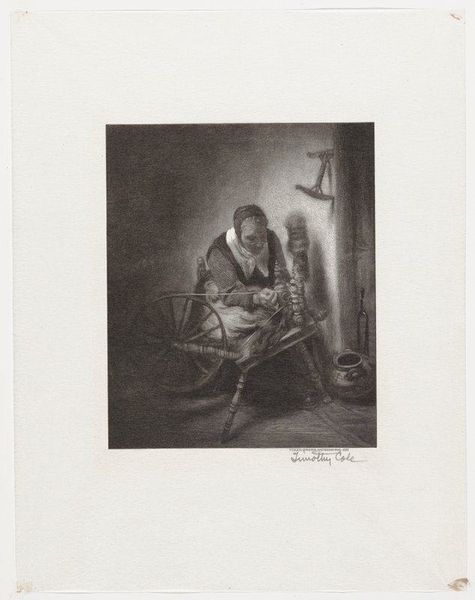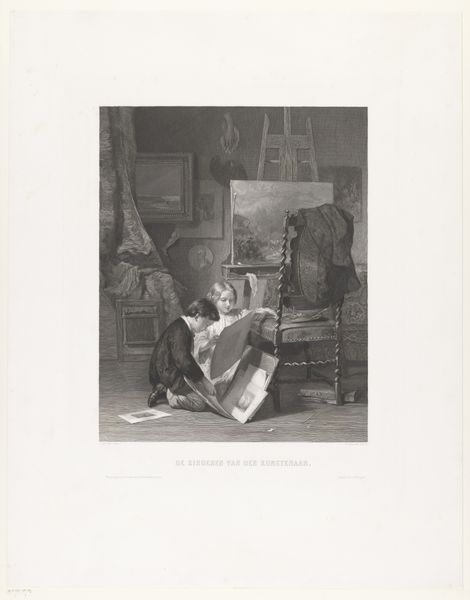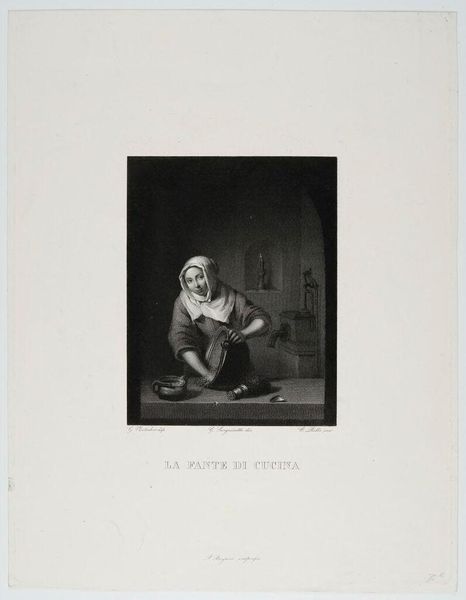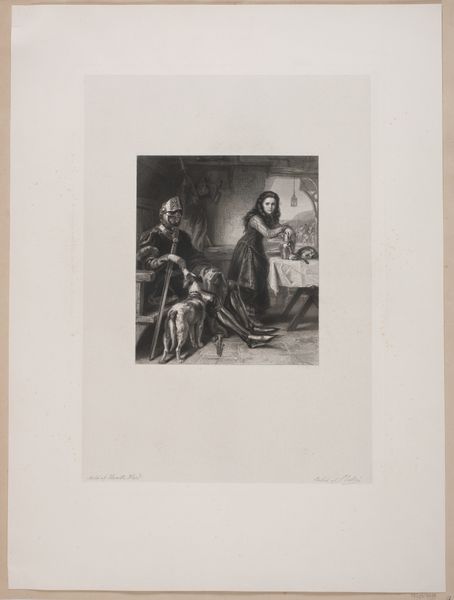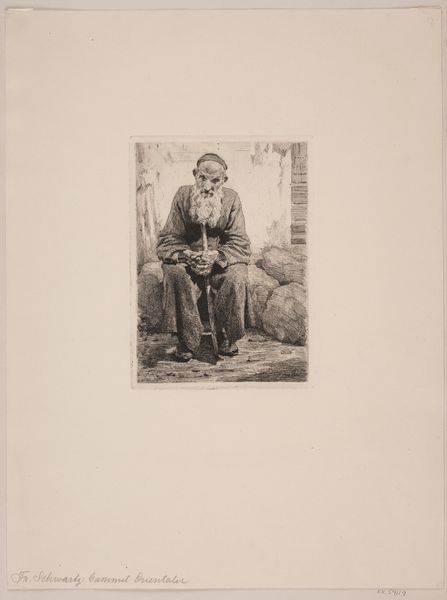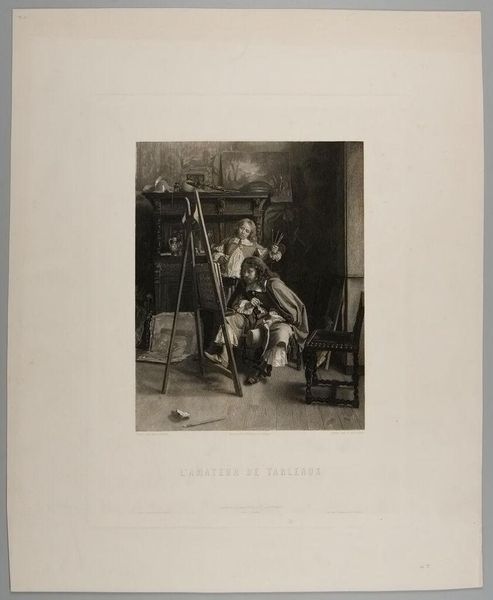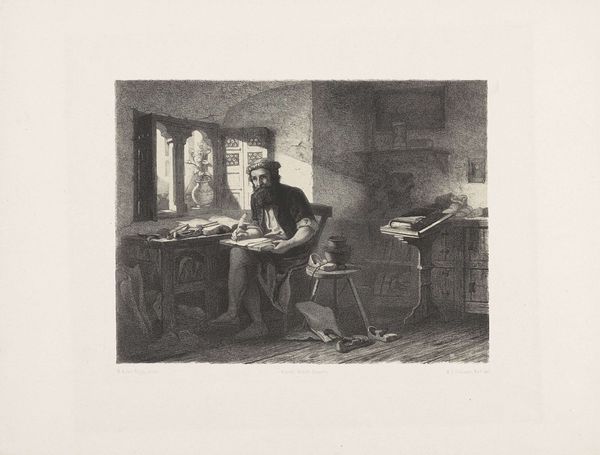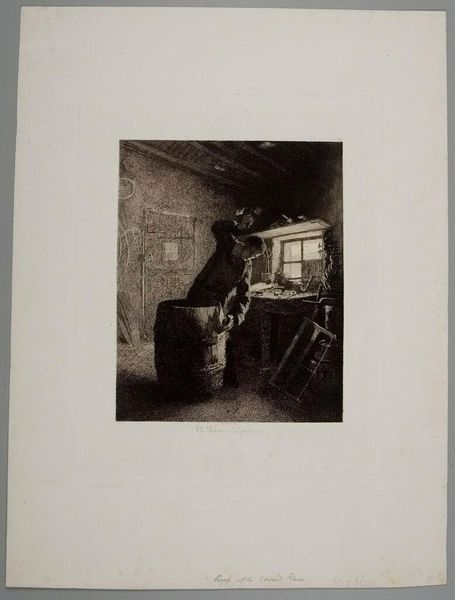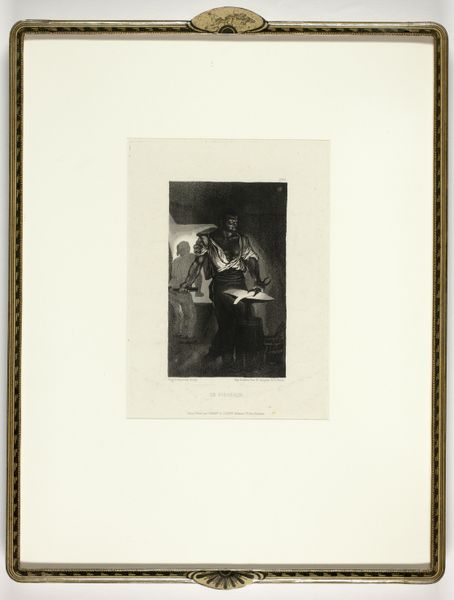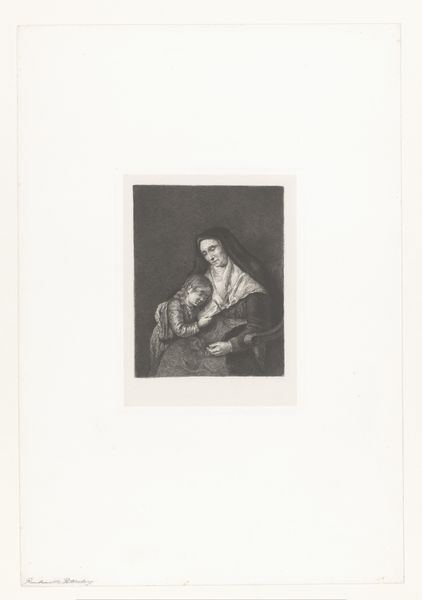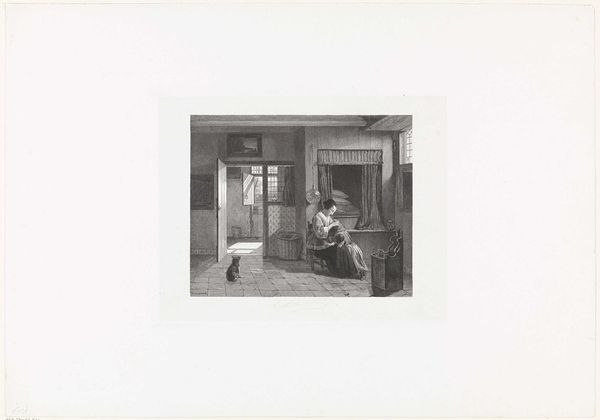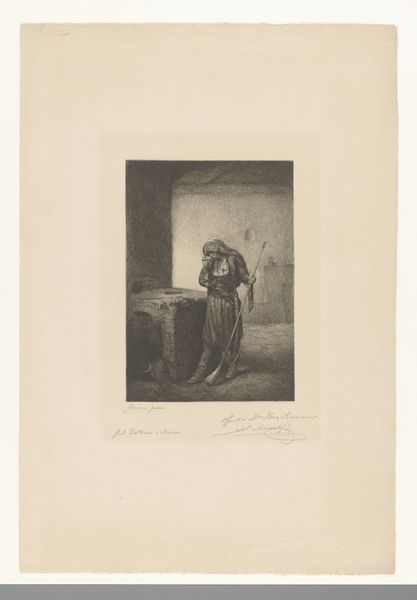
drawing, pencil
#
portrait
#
drawing
#
pencil sketch
#
pencil drawing
#
pencil
#
genre-painting
#
realism
Dimensions: height 262 mm, width 231 mm
Copyright: Rijks Museum: Open Domain
Curator: Right in front of us, we have "De Spinster" or "The Spinner," a pencil drawing created by Christiaan Lodewijk van Kesteren in 1861. It's currently held here at the Rijksmuseum. Editor: My immediate thought? The level of detail in rendering the texture of the fabrics and the wooden wheel is impressive. It makes me think about the physical labor involved, both by the artist and the subject. Curator: Absolutely. Kesteren, though less celebrated than some of his contemporaries, provides a vital window into mid-19th-century genre painting, a form very popular at the time. Editor: Precisely. You can see it as more than just a genre piece, though. Pencil, often seen as preparatory, is the sole medium here, elevating it to finished work status. I am interested in the economics of her work versus the perceived low status of her labor reflected in the medium’s cost. Curator: Indeed. It's a fascinating glimpse into the socio-economic context. The composition directs us toward the domestic sphere. Consider the position of women within 19th-century Dutch society. Works like this speak to the broader narrative around labor and gender roles during this period. Editor: The contrast between the darkness in the background and the light falling on the woman and her spinning wheel further emphasize this feeling. Also the wheel almost acts as a frame that contains the spinster. You get a sense of not only confinement, but isolation in this work, yet despite it all she looks dignified and focused. Curator: I concur. We also see the beginnings of the rise of Realism, with an unvarnished view of everyday life, of which the artist was definitely aware. This also reminds us that women contributed greatly to the economics of the family, and Dutch culture at the time, that isn't captured by many others. Editor: Absolutely. So much is concentrated here through what is often considered a less important medium. Seeing "The Spinner" encourages us to think about art history beyond oils and grand narratives. Curator: Agreed. The drawing becomes a vehicle to explore the economic, social and the domestic sphere. It shows the ability of the Dutch Realist movement to capture a moment, and time, in a thought provoking work on paper.
Comments
No comments
Be the first to comment and join the conversation on the ultimate creative platform.
